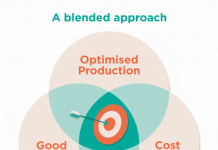Here we look at Bloom’s Taxonomy of learning, which was created to give educators and trainers a set of principles for guiding knowledge development and retention.
A solid process for learning and skills development is critical within education and training so that learners can be supported to go on to apply their knowledge at a practical level.
But the goal of a solid, repeatable process has tended to be a problem for teachers / trainers to articulate and share. Bloom’s Taxonomy aims to solve this problem by helping teachers and trainers to guide learners in a structured manner so that knowledge sticks and is applicable outside the classroom.
What is Bloom’s Taxonomy?
Originally published in 1956 based on principles developed by Benjamin Bloom, the hierarchical system known as Bloom’s Taxonomy classifies key elements of knowledge development and retention into 6 distinct categories: Knowledge, Comprehension, Application, Analysis, Synthesis, and Evaluation. The primary goal of Bloom’s Taxonomy is to encourage a higher-order understanding among learners.
For example, if you prepare a training programme for intellectual property laws, or fire safety procedures, what are the most critical aspects of the training, without which the learner could not then work in a real-life environment in a satisfactory manner?
Cognitive learning is divided according to the complexity and richness of the training material, and as you move up the hieracrchy, the level of complexity also increases. This framework helps instructors identify, classify, and outline what learners are expected to learn.
How Bloom’s Taxonomy principals can improve training quality and learning outcomes
Use of Bloom’s Taxonomy encourages learners to have better control over the thought process that guides internalisation of information and concepts.
If applied thoughtfully, it can help create better-focused courses based on the different levels of cognitive demand on learners and can also help design an effective evaluation system.
Bloom’s Taxonomy for the Cognitive Domain (original version)
So, using the 6 levels within Bloom’s framework, educators and trainers may find it easier to design effective programmes for their learners. Below, we’ll discuss the 6 levels in detail with some practical applications.
-
Knowledge
This is the first stage of the concept of Bloom’s Taxonomy, which mainly talks about the information you are looking to disseminate to learners. Although identifying the required knowledge is not difficult, you need to follow structured steps to deliver information to learners effectively.
Think of how you can take advantage of textual content, animation, videos, graphics or the latest learning technologies like VR training experiences to deliver the knowledge. And in order to ensure they are grasping the knowledge, ask a few short questions to get an idea of whether they have absorbed the concept.
-
Comprehension
At this level, you have to check whether learners understood the information imparted within a particular learning objective of the training. This can be tested in a variety of ways by asking probing questions.
-
Application
This phase requires information to be put into action using simulations, tests, scenarios, and role-playing games to increase the interaction level in the class. Real-life scenarios can be developed and learners should be asked to apply the knowledge they have acquired to solve them.
At the end of this stage, a learner should be able to apply knowledge outside of the classroom environment. For example, they can be asked to calculate the family budget after learning a maths formula, complete an administrative task within a software simulation, or apply a legal clause to a specific litigation scenario.
Practical Application: Decide on a course of legal action when asked to deal with a possible copyright infringement by another company.
-
Analysis
At this stage, a topic is broken into different components from a variety of angles in order to see how the “whole ” is created from the sum of its parts. Why is this important? Often people miss the big picture and the overall objective as they fail to recognise the commonalities between different areas of knowledge that could help them to deal with future questions and scenarios.
Thorough analysis helps to build connections between the facts.
Breaking information into key components helps with building understanding of structure and relationships, rather than facts and components in isolation.
Practical Application: When creating a scenario of a cybersecurity breach, learners can be asked to suggest a course of action after weighing up the pros, cons and possible outcomes of a range of possible decisions.
-
Synthesis
This involves putting together different components to form a new whole using a unique combination or by putting together new schemes for classifying information. The emphasis in this stage is on the formulation of new patterns and structures.
-
Evaluate
During the evaluation stage, learners are expected to justify a particular decision, and defend, judge or argue based on the understanding or knowledge they have acquired so far in the training.
Bloom’s Taxonomy attaches a lot of importance to this stage.
Practical Application: Learners could be assigned a task to create a risk-mitigation plan in investment strategy, articulating the reasons and pre-empting potential concerns about suggested actions within the plan.
Bloom’s Taxonomy Revised, 2001
In a modern version of Bloom’s Taxonomy revised and published by Anderson and Krathwohl in 2001, the levels were reordered and renamed following further educational psychology research to:
- Remember
- Understand
- Apply
- Analyse
- Evaluate
- Create (replacing Synthesis).
Final Thoughts
No learning model is perfect and a common complaint of this methodology is that in the real world, the learning process does not work in such a linear or hierarchical manner as suggested in Bloom’s Taxonomy.
However, using a structure like the 6 levels of Bloom’s Taxonomy could help many teachers and trainers to create and articulate repeatable programmes for effective education and training.
Sources:
https://learningcenter.unc.edu/tips-and-tools/higher-order-thinking/
https://tips.uark.edu/using-blooms-taxonomy/
https://www.eoas.ubc.ca/research/cwsei/resources/Blooms-verbs-stems.htm













